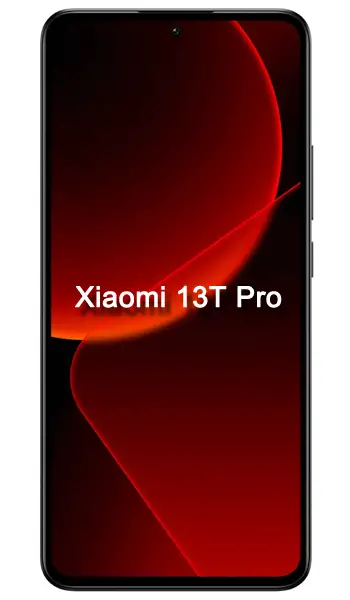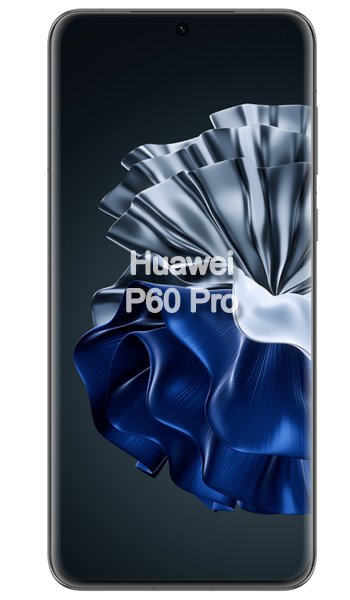Xiaomi 13T Pro vs Huawei P60 Pro Comparison and Differences
Smartphone 1

Xiaomi 13T Pro
Smartphone 2

Huawei P60 Pro
Smartphone 3
Differences between Xiaomi 13T Pro and Huawei P60 Pro - Which to Choose?
Reasons to consider the Xiaomi 13T Pro:
- Higher maximum brightness of 2600 nits (peak) compared to typical OLED brightness on Huawei P60 Pro.
- Integrated 5G connectivity, offering faster data speeds where available compared to Huawei P60 Pro's apparent lack of 5G.
- Higher CPU clock speed in its primary core at 3.35 GHz for potentially better performance in single-threaded tasks.
- More memory options, with up to 1TB storage and 16GB RAM compared to Huawei P60 Pro's maximum of 512GB and 12GB RAM.
- 120W Fast charging capability, which is significantly faster than Huawei P60 Pro's 88W.
- Higher Antutu v10 performance score indicating potentially better overall performance.
- Slightly higher resolution main camera sensor at 50 MP.
- Larger battery capacity of 5000 mAh compared to Huawei P60 Pro's 4815 mAh.
Reasons to consider the Huawei P60 Pro:
- Kunlun Glass which might offer improved durability over the Xiaomi 13T Pro's Gorilla Glass 5.
- Qualcomm chipset which may provide better compatibility with some apps and services, though Huawei P60 Pro is limited to 4G connectivity.
- Variable aperture on the main camera offers versatility in depth of field and light intake.
- Availability of wireless charging and reverse wireless charging which is not present on Xiaomi 13T Pro.
- The HarmonyOS or EMUI operating systems might be preferred by some users over Android, depending on user familiarity and ecosystem integration.
- NM (Nano Memory) card support which offers additional storage expansion up to 256GB.
- Better DxOMark scores indicating potentially superior camera performance, especially in photography.
- HCE (Host Card Emulation) for NFC, enhancing support for virtual cards and mobile payment systems.
Both the Xiaomi 13T Pro and Huawei P60 Pro have their unique advantages and the decision between them will ultimately depend on the user's specific needs and preferences. The above points focus on the distinguishing features that could sway a decision one way or the other.
Xiaomi 13T Pro or Huawei P60 Pro Specs Comparison
or
 Common specs
Common specs
| Brand and model | Xiaomi 13T Pro | Huawei P60 Pro | |
| Rating | (+2) | (+2) | |
| Release date | 2023, September 26 | 2023, March 23 | |
| Dimensions (HxWxD) | 162.2 x 75.7 x 8.5 mm | 6.39 x 6.39 x 2.98 in | 161 x 74.5 x 8.3 mm | 6.34 x 6.34 x 2.93 in | |
| Weight | 200 g | 7.05 oz | 200 g | 7.05 oz | |
| Body Build | Glass front (Gorilla Glass 5), glass back or silicone polymer back, plastic frame | Glass front, glass back, aluminum frame | |
| Case | buy from Amazon | buy from Amazon | |
| Colors | Alpine Blue, Meadow Green, Black | Black, Green, Violet, Rococo Pearl | |
| Battery | 5000 mAh, Li-Po, non-removable | 4815 mAh, Li-Po, non-removable | |
| Approximate price | $ 700 | 1200 EUR | |
| Check price | from Amazon | from Amazon |
 Screen
Screen
| Technology | AMOLED | LTPO OLED | |
| Touchscreen | capacitive touchscreen | capacitive touchscreen | |
| Display colors | 68B | 1B | |
| Screen size | 6.67" in | 6.67" in | |
| Screen area | 107.4 cm2 | 107.7 cm2 | |
| Screen format | 20:9 (height:width) | ||
| Screen to body ratio | 87.5% | 89.8% | |
| Screen resolution | 1220 x 2712 px | 1220 x 2700 px | |
| Screen PPI /points per inch/ | 446 PPI | 444 PPI | |
| Screen protection | Corning Gorilla Glass 5 | Kunlun Glass | |
| Other specs | - 144Hz, Dolby Vision, HDR10+, 1200 nits (HBM), 2600 nits (peak) - |
- 120Hz | |
| Screen protector | buy from Amazon | buy from Amazon |
 Camera and Video
Camera and Video
| Rear camera, main | 50 MP, Triple | 48 MP, Triple | |
| Camera specs | -50 MP, f/1.9, 24mm (wide), 1/1.28", 1.22µm, PDAF, OIS -50 MP, f/1.9, 50mm (telephoto), 1/2.88", 0.61µm, PDAF, 2x optical zoom -12 MP, f/2.2, 15mm (ultrawide), 1/3.06", 1.12µm |
-48 MP, f/1.4-f/4.0, 25mm (wide), PDAF, Laser AF, OIS -48 MP, f/2.1, 90mm (telephoto), PDAF, sensor-shift OIS, 3.5x optical zoom -13 MP, f/2.2, 13mm (ultrawide), AF |
|
| Functions | Leica lens, LED flash, HDR, panorama | LED flash, HDR, panorama | |
| Video | 8K@24fps, 4K@24/30/60fps, 4K/1080p@30fps HDR10+, 1080p@30/60/120/240fps; 10-bit LOG, gyro-EIS | 4K@30/60fps, 1080p@30/60fps, 1080p@960fps; gyro-EIS | |
| DxOMark Main Score | 131 | 156 | |
| DxOMark Photo | 135 | 159 | |
| DxOMark Video | 134 | 158 | |
| Front camera, selfie | 20 MP, Single | 13 MP, Single | |
| Specifications | 20 MP, f/2.2, (wide), 0.8µm | 13 MP, f/2.4, (ultrawide) | |
| Functions | HDR | Panorama, HDR | |
| Video | 1080p@30fps, HDR10+ | 4K@30/60fps, 1080p@30fps |
 Performance
Performance
| Operating system - OS | Android 13, MIUI 14 | HarmonyOS 3.1 (China), EMUI 13.1 (Europe), no Google Play Services | |
| Chipset | - Mediatek MT6985 Dimensity 9200+ (4 nm) | - Qualcomm SM8475 Snapdragon 8+ Gen 1 4G (4 nm) | |
| CPU | - Octa-core (1x3.35 GHz Cortex-X3 & 3x3.0 GHz Cortex-A715 & 4x2.0 GHz Cortex-A510) | - Octa-core (1x3.19 GHz Cortex-X2 & 3x2.75 GHz Cortex-A710 & 4x2.0 GHz Cortex-A510) | |
| GPU | Immortalis-G715 MC11 | Adreno 730 | |
| External memory | No | NM (Nano Memory), up to 256GB (uses shared SIM slot) | |
| Internal memory | 256GB 12GB RAM, 512GB 12GB RAM, 1TB 16GB RAM | 256GB 8GB RAM, 512GB 12GB RAM |
 Benchmark
Benchmark
| Antutu 10 Total | 1498628 | 1255640 | |
| Antutu 10 CPU | 377101 | 355754 | |
| Antutu 10 GPU | 521407 | 475334 | |
| Antutu 10 Mem | 324294 | 193704 | |
| Antutu 10 UX | 377101 | 355754 | |
| Antutu 9 Total | 989546 | ||
| GeekBench 5 Single Core | 1376 | ||
| GeekBench 5 Multi-Core | 4511 |
 Communication and Connectivity
Communication and Connectivity
| SIM card | Nano-SIM and eSIM or Dual SIM (Nano-SIM, dual stand-by) | Single SIM (Nano-SIM)Hybrid Dual SIM (Nano-SIM, dual stand-by) | |
| Network | GSM / HSPA / LTE / 5G | GSM / CDMA / HSPA / CDMA2000 / LTE | |
| Bands | -2G - GSM 850 / 900 / 1800 / 1900 - SIM 1 & SIM 2 -3G - HSDPA 800 / 850 / 900 / 1700(AWS) / 1900 / 2100 -4G - 1, 2, 3, 4, 5, 7, 8, 12, 13, 17, 18, 19, 20, 25, 26, 28, 32, 38, 39, 40, 41, 42, 48, 66 -5G - 1, 3, 5, 7, 8, 20, 28, 38, 40, 41, 66, 75, 77, 78 SA/NSA |
-2G - GSM 850 / 900 / 1800 / 1900 - SIM 1 & SIM 2 (dual-SIM) CDMA 800 -3G - HSDPA 800 / 850 / 900 / 1700(AWS) / 1900 / 2100 CDMA2000 1x -4G - LTE |
|
| Speed | HSPA, LTE-A, 5G | HSPA, LTE-A | |
| GPRS | Yes | Yes | |
| Edge | Yes | Yes | |
| Wi-Fi | Wi-Fi 802.11 a/b/g/n/ac/6e/7, tri-band, Wi-Fi Direct | Wi-Fi 802.11 a/b/g/n/ac/6, dual-band, Wi-Fi Direct | |
| GPS | GPS (L1+L5), GLONASS (G1), GALILEO (E1+E5a), NavIC (L5), BDS | GPS (L1+L5), GLONASS (B1I+B1c+B2a), BDS (B1I+B1c+B2a), GALILEO (E1+E5a), QZSS (L1+L5), NavIC | |
| NFC | YesYes | Yes; NFC-SIM, HCE | |
| USB | USB Type-C 2.0, OTG | USB Type-C 3.1, OTG | |
| Bluetooth | 5.3, A2DP, LE5.4, A2DP, LE | 5.2, A2DP, LE |
 Music and Audio
Music and Audio
| Radio | No | No | |
| Headphone jack | No | No | |
| Others | - 24-bit/192kHz audio |
 Other features
Other features
| Sensors | - Fingerprint (under display, optical), accelerometer, gyro, proximity, compass, color spectrum , Infrared port | - Fingerprint (under display, optical), accelerometer, gyro, proximity, compass, color spectrum , Infrared port | |
| Other extras |
- 120W Fast charging, 100% in 19 min -Power Delivery 3.0 -Quick Charge 4 - IP68 dust/water resistant (up to 1.5m for 30 min) |
- BDS Satellite Message - Fast charging 88W -Wireless charging 50W -Reverse wireless charging - IP68 dust/water resistant (up to 1.5m for 30 min) |
Reviews and Opinions on Xiaomi 13T Pro and Huawei P60 Pro
If you had to recommend one of these phones to a friend, which one would it be and why? Share your arguments using the Add Opinion button!

